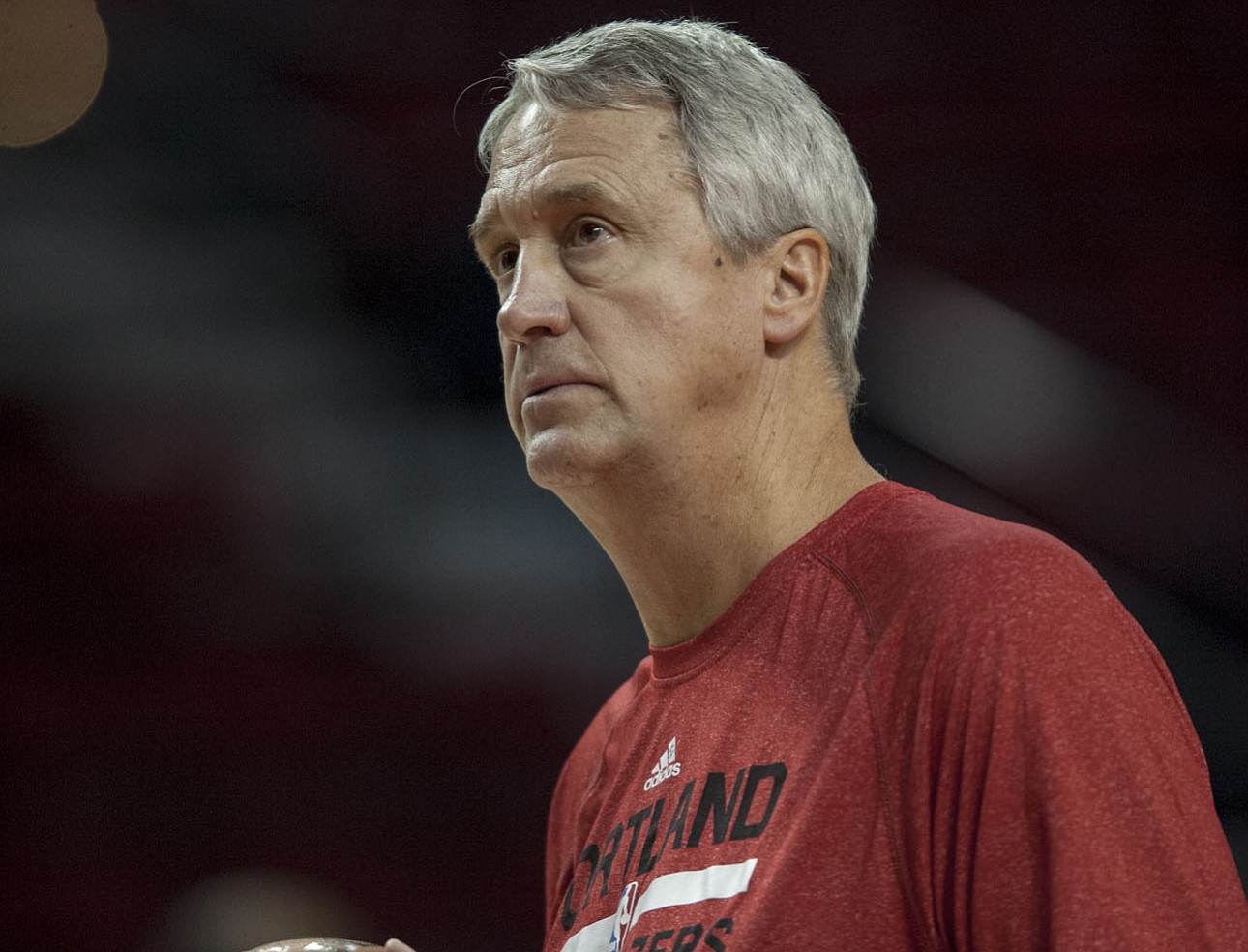TUALATIN, Ore. — The Trail Blazers, when healthy, have one of the NBA’s deepest front courts.
LaMarcus Aldridge and Robin Lopez form one of the NBA’s best big-man combinations.
Chris Kaman has brought a scoring punch to the bench and Meyers Leonard has already played more minutes than he did all of last season. Thomas Robinson and Joel Freeland have each had major roles in wins, mostly with defense.
At some point all have worked with assistant coach Kim Hughes, a six-year veteran of the ABA and NBA, mostly with the New Jersey Nets and Denver Nuggets. He went on to have a lengthy European career.
Hughes had decided long before his pro playing days that he wanted to go in to coaching.
“I really liked my college coach,” Hughes said. “He was like a father figure and I really liked the teaching aspect of it. So in college I thought about coaching when I was done playing. I didn’t know when I first started in college that I was going to play pros but I knew I wanted to coach.”
He started in the NBA as a scout for the Milwaukee Bucks and then worked in the Denver front office before joining Mike Dunleavy’s staff on for the Los Angeles Clippers in 2003.
It was there in Los Angeles where he would work with a young assistant coach named Neil Olshey before Olshey made the jump to the front office for the 2005-06 season.
It was during Hughes’ time in Los Angeles when he worked closely with Kaman as well as Elton Brand.
And when head coach Terry Stotts and Olshey were putting the staff together in his first season, they were looking for a big man coach. Olshey recommended Hughes, whom Stotts was familiar with before an interview got him the job.
Whether it is discussing how Aldridge can improve his free-throw percentage or working with Lopez, he does a lot with Portland’s bigs. But there is no question that Hughes has worked most closely with Meyers Leonard.
Leonard and Hughes arrived to Portland at the same time and their relationship has only grown both on and off the court.
“He is like a father figure to me,” Leonard said. “I obviously trust in his knowledge when it comes to the game, and teaching me things that I need to know to better myself on the court. But also as a man.”
They will often spend time together away from the facility.
“He’s there for me anytime I need something,” Leonard said. “His wife’s car was messed up, so she had to borrow his, so I went and picked him up to go to the airport. It’s the little things.”
Over the summer, Leonard, Hughes and Kaman worked out at Kaman’s home in Michigan. It formed a coach-veteran-youth tripod of productivity built on competition.
“The amazing thing about is they are better together,” Hughes said. “When I watch film with Chris, invariably Meyers watches. So it makes him better because he sees the mistakes Chris made and the corrections. And we show occasional good things as well so that helps Meyers to see what he needs to do. Then about half the time I watch tape Meyers, Chris watches and he critiques along with me.”
Leonard and Kaman both learn better when there is a competition between them.
“I think coaching is teaching,” Hughes said. “We make it seem like it’s really exotic. It’s just teaching.”
And Hughes feels some satisfaction in seeing his previous work with Kaman come full circle again.
“If you saw Chris when he played his third year, he was very similar to Meyers,” Hughes said. “A little bit raw, undisciplined, a shade goofy but you could see the raw talent. You could see the attributes he had to be a good NBA player.”
The most important thing that Hughes says he has learned is that players can change.
When he first worked with Kaman early in his career, a younger Kaman was reluctant to shoot jumpers despite being a good 3-point shooter.
Brand did not develop as a jump shooter until the middle of his career.
Leonard’s game presents an opposite dilemma as he has developed into one of the team’s most reliable jump shooters and is the team leader in effective field goal percentage (which counts the value of 3-pointers as well as 2-pointers).
Hughes wants Leonard to work on his post game to better exploit mismatches and improve his defensive rebounding.
“I think sometime he relies too much on the outside shot,” Hughes said. “So I would prefer that he continue to work on his post game. Which he doesn’t like but I want him to. So we argue about that but he’s not going to win that battle.”
He added: “You can add anything to your arsenal if you put in work.”




